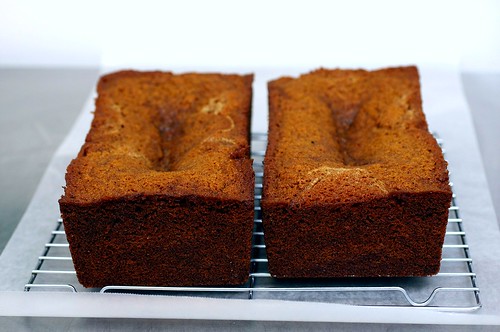The biggest problem in baking at high altitudes comes down to one thing- MOISTURE! Living in the desert is not much of a help either...maybe we should just bake on rainy days...I wonder if that helps? Moist batters will take longer to cook in the middle. The structure of baked goods can become weak. Flavors are dulled. Cakes and yeast breads rise too fast and then collapse. All of these sound like a recipe for disaster! It makes one wonder if it is even worth it! Many people I know have given up completely. I love baking, it is the one thing in the kitchen that I am good at, so I am determined to make this work!
I hope this will help more of you to get back into the kitchen and enjoy more of your favorite recipes.
Recipe Adjustment Guide
| Adjustments | Altitudes | |||
| 3,000 ft | 5,000 ft | 7,000 ft | 10,000 ft | |
| Flour Increase each cup by: | 0 to 1 tablespoon | 0 to 2 tablespoons | 3 to 4 tablespoons | 2 to 4 tablespoons |
| Baking Powder or Baking Soda Decrease each teaspoon by: | 0 to 1/8 teaspoon | 1/8 to 1/4 teaspoon | 1/4 to 1/2 teaspoon | 1/2 to 2/3 teaspoon |
| Sugar Decrease each cup by: | 0 to 1 tablespoon | 0 to 2 tablespoons | 2 to 4 tablespoons | 3 to 4 tablespoons |
| Liquid Increase each cup by: | 0 to 2 tablespoons | 2 to 4 tablespoons | 3 to 4 tablespoons | 3 to 4 tablespoons |
| Fats (may not be necessary) Decrease each cup by: | 0 | 0 | 0 | 1 to 2 tablespoons in very high-fat cakes and some cookies |
Why to increase or decrease your ingredients is explained really well here.
Tips I am hanging on to:
For cookies add an extra egg yolk to the recipe to help keep them fluffy. Pour heavy on the extracts.
Under whip your eggs and egg whites. Yeah we get to give our arms a rest!
Increase the amount of butter in your pie crusts to avoid having to add too much water. You need more moisture, but you don't want to add too much water or the pastry will be tough.
Substitute buttermilk, sour cream and yogurt for whole milk, since acids are increased at higher altitude. I like this sense it is sometimes difficult to find some of these ingredients here in Mexico!
Use Parchment paper! when a recipe asks for a greased and floured pan. Greasing and flouring pans is not enough :( More expensive...but less mess :) It is probably best to grease baking sheets for cookies, even if the recipe does not call for it.
Preheat your oven! Give it time and use an additional thermometer in the oven to be certain the temperature is correct. Increase your oven temperatures by 15 to 25*F. Monitor your dish carefully as it may brown too quickly. Have aluminum foil on hand when baking pies as the top crust will certainly brown before the filling is even warmed through.
Use the top half of the oven, keeping away from the heat source will allow the middle portion of the dish cook before the outsides start to burn.
Wrap it up! Airtight containers and plastic wrap are you friend!!! Drier air means that baked goods will go stale faster.




No comments :
Post a Comment